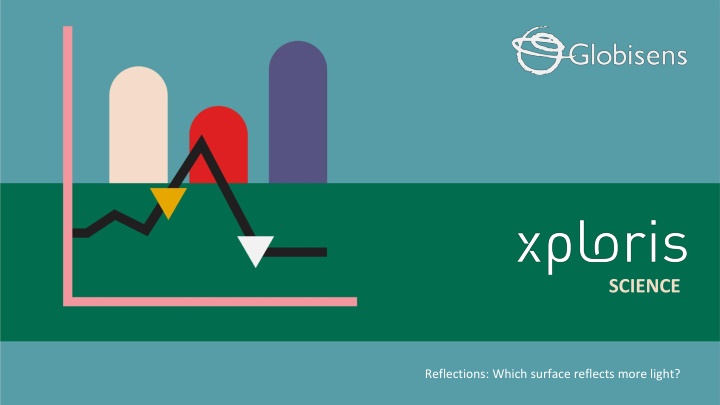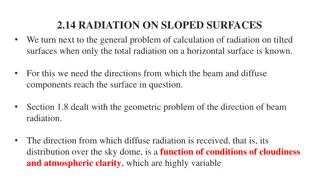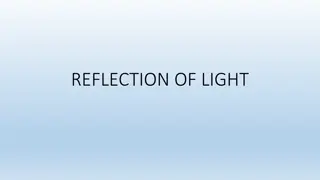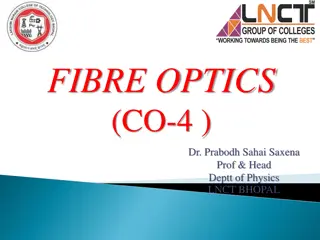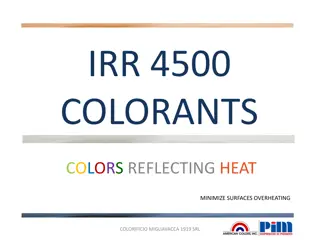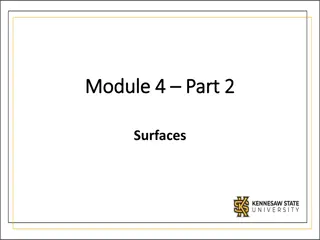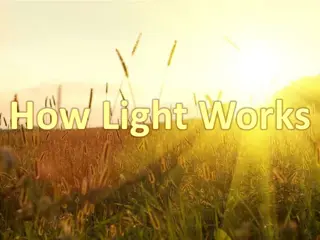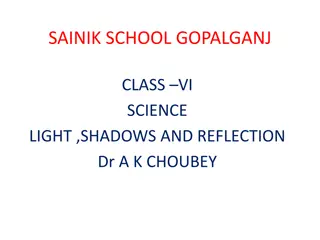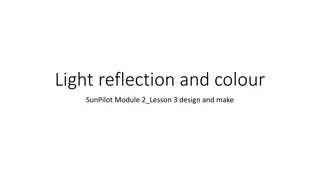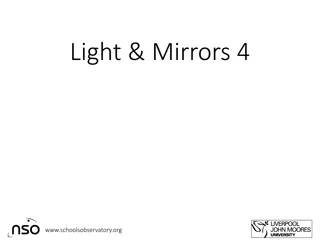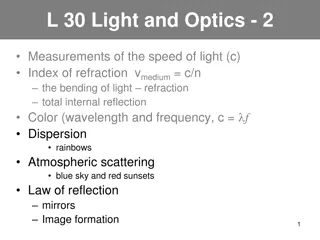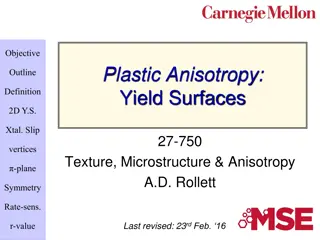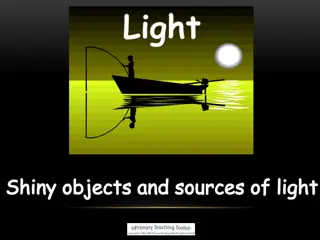Comparing Light Reflection on Different Surfaces
In this experiment, you will compare how much light is reflected by white paper, black paper, and aluminum foil using an Xploris light sensor. Understand why objects appear in different colors based on light reflection. Follow steps to set up the experiment and analyze data to determine which surface reflects more light. Explore the science behind light reflection with practical measurements and observations.
Download Presentation

Please find below an Image/Link to download the presentation.
The content on the website is provided AS IS for your information and personal use only. It may not be sold, licensed, or shared on other websites without obtaining consent from the author.If you encounter any issues during the download, it is possible that the publisher has removed the file from their server.
You are allowed to download the files provided on this website for personal or commercial use, subject to the condition that they are used lawfully. All files are the property of their respective owners.
The content on the website is provided AS IS for your information and personal use only. It may not be sold, licensed, or shared on other websites without obtaining consent from the author.
E N D
Presentation Transcript
SCIENCE Reflections: Which surface reflects more light?
WHICH SURFACE REFLECTS MORE LIGHT? Introduction 1 Introduction Setting up the experiment 2 Setting up the experiment Data collection 3 Data collection SCIENCES Data analysis 4 Data analysis Questions 5 Questions Activity summary 6 Activity summary
Introduction 1 Have you ever wondered why we perceive objects in different colors? This occurs because white light contains all colors combined. When it hits an object, that object absorbs all colors except for the one we see, which is reflected towards our eyes. For instance, a red apple absorbs all colors except red, which it reflects, allowing us to see it as red. From the text above we can deduce that not all objects reflect light in the same way, so in this lesson you are going to compare how much light is reflected by 3 different surfaces using the Xploris light sensor. The question you will answer will be: Which of the following materials reflects more light and which reflects less: white paper, black paper, or aluminum foil?
Setting up the experiment 2 You will expose 3 surfaces directly to the sun and measure how much light they reflect using the Xploris light sensor. The surfaces you will use are: a sheet of white paper, aluminum foil and a sheet of black paper. To take a measurement, we suggest looking carefully at the Xploris screen until the light intensity stabilizes and then taking the measurement.
Setting up the experiment 2 The light sensor is located at the back of the Xploris, make sure it is uncovered as shown in the picture.
Setting up the experiment 2 Turn on your Xploris and connect it to your computer or tablet. Open the XploriLab software on your computer or tablet. Once inside XploriLab, select the icon to connect the device via cable or bluetooth as applicable. Go to the SCIENCE section and then to DATA LOGGER.
Setting up the experiment 2 XploriLab software configuration 1 To start any configuration related to the sensors, please select the setup icon. The sensor you will use for this activity is the light sensor and you will configure it to take manual measurements with a total of 10 samples. Once the configuration has been completed, select Apply to save it.
Setting up the experiment 2 XploriLab software configuration Click the line icon on display and select the bars option. Click the PLAY icon to start recording. Then, when you want to collect a new measurement - press the Light key on the Xploris. 3 2
Data collection 3 Carefully watch the Xploris screen to take measurements manually. Wait for the data to stabilize before recording them. Take a sample for each of the surfaces, so you will get 3 bars, as in the graph below. LIGHT REFLECTION GRAPH
2 Data analysis 4 To change the Y-axis values of a graph you must do the following: 1 1. Double click on the Y-axis name. 2. A dialog box will open in which you will have to enter the maximum and minimum values. 3. Once you have entered the values, click on Apply .
Data analysis 4 2 GRAPH WITH MARKERS Use markers to add labels to the graph columns. To do this you must select the Marker icon:
2 Data analysis 4 To add photos to the notes within a graph you must do the following: 3 1. Select the note icon. 2. Click on the bar where you want to add a note. 3. A dialog box will open and allow you to add the note with text and images. 4. Take a picture of the surface used in the activity and select it for the note image.
Data analysis 4 GRAPH WITH NOTES 4
Questions 5 Let's take a look at the graph Let's keep experimenting! 1 4 What do you think the light reflection will be like on other colored surfaces? Formulate your hypothesis and experiment using the Xploris sensor by measuring the light on differentcolored leaves. Which of the surfaces reflected more light and which reflected less? Let's take a look at the graph 2 Which of the surfaces absorbed more light and which absorbed less? Did your answers to questions 1 and 2 match what you expected before doing the experiment? Let's relate the data 3 It is said that on hot days you should avoid black clothing and go for light colors. In what way do you think heat can be related to the light absorbed by the fabric of clothing?
Activity summary 6 We used the Xploris light sensor to measure the light reflected by 3 surfaces: a sheet of white paper, a sheet of black paper and aluminum foil when exposed to direct sunlight. We created a bar graph and analyzed the data to establish which surface reflected more light and which reflected less and compared the data obtained with what we thought before doing the experiment. We reflected on light absorption and the suitability of certain clothing for use on warm days. In addition, we experimented again by varying the colors of the leaves used in the procedure.
SCIENCES Reflections: Which surface reflects more light?
